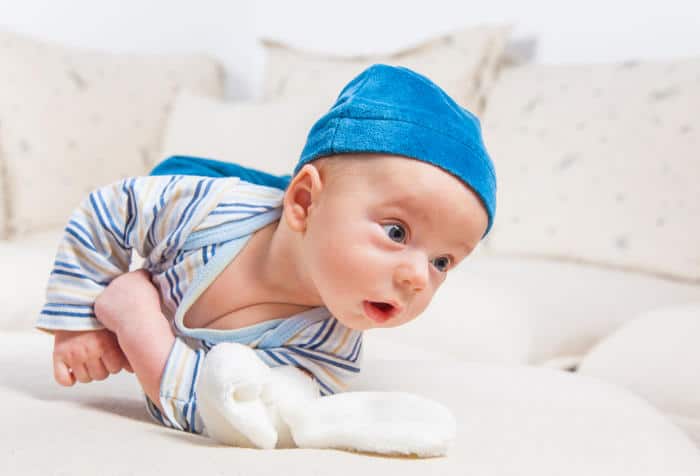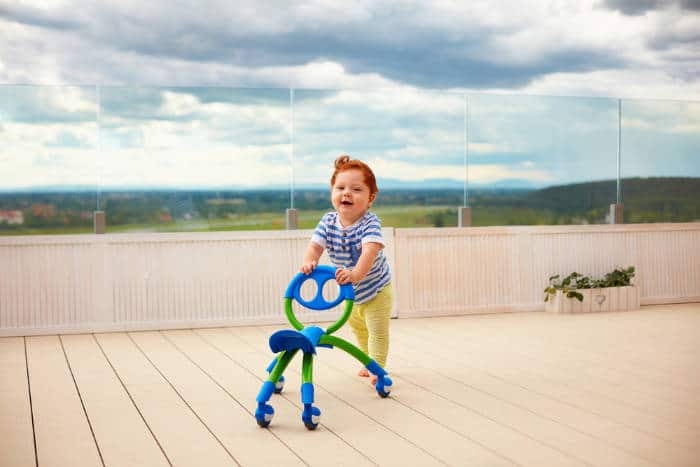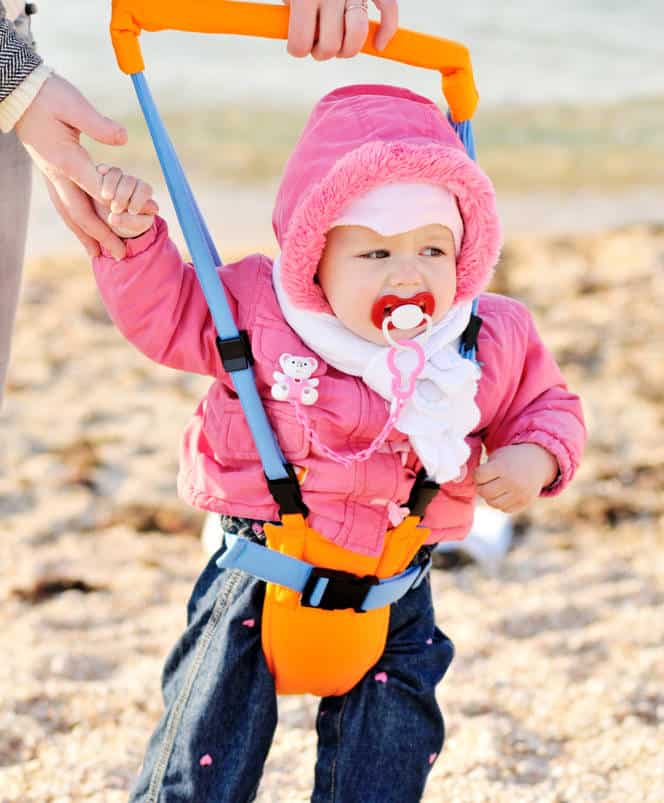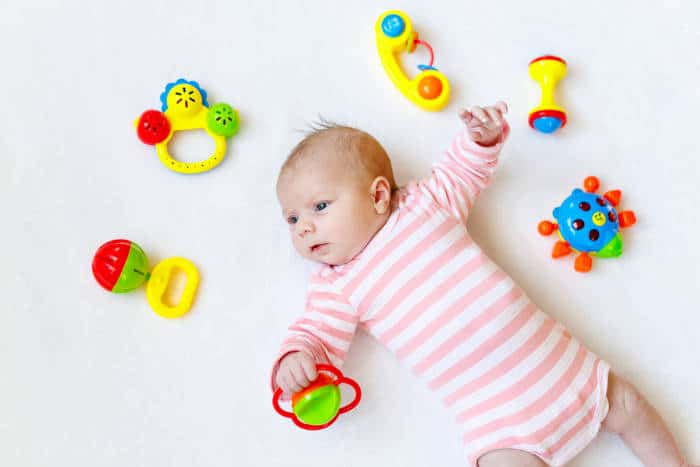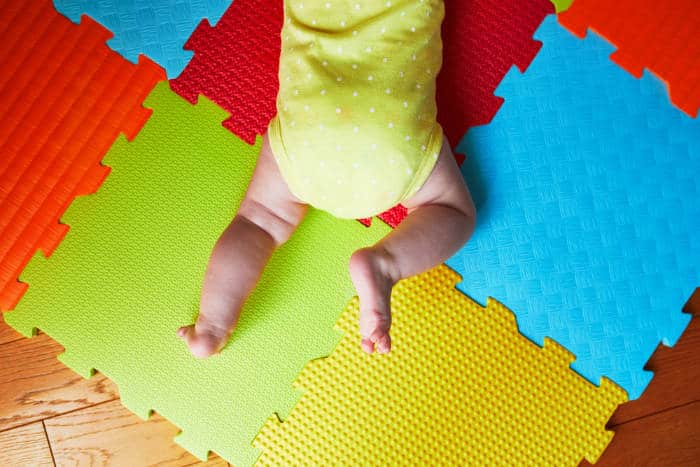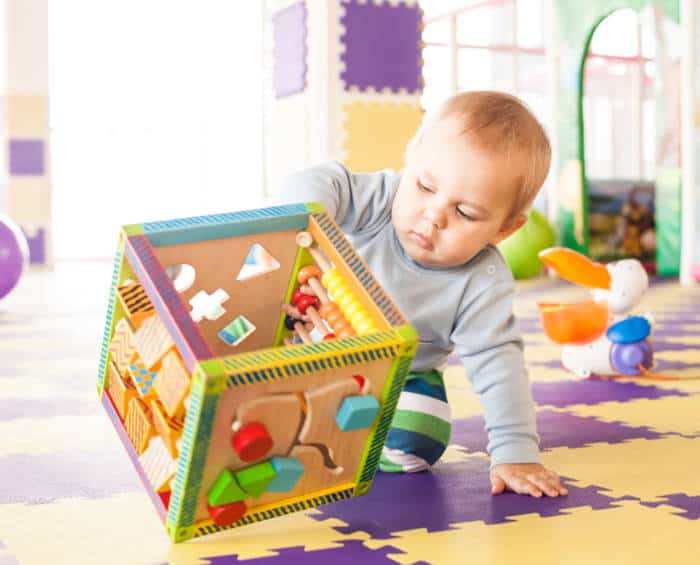A common concern for many new parents is what they are supposed to do with the brand new baby they just brought home from the hospital. He or she likely spends most of their time eating or sleeping.
So, what are you supposed to do during those “in-between” times where you’re burping, changing, and waiting for the next round of milk and sleep? They obviously aren’t up for a game of catch in the backyard.
But months 0-3 are actually full of opportunities for bonding and stimulation, even if the activities aren’t so obvious. We’ve done our best to outline what your baby should be doing and what milestones to look for. Read on for ways to stimulate the important sensory development that goes into those early milestones, as well ideas for how to make it fun for both of you.
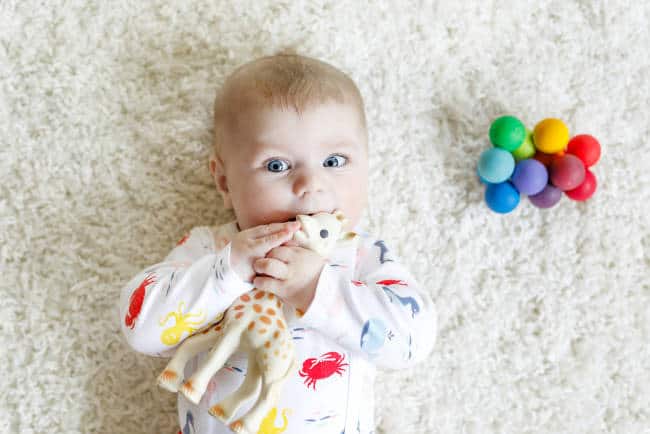
0-3 Month Baby Development
Months 0-3 are pretty tame compared to the later months. You won’t be chasing your newborn down as they attempt to climb stairs or destroy your houseplants. However, they won’t be lying there like a porcelain doll either. So, what can they do?
Well, babies 0-3 months benefit from tummy time. During this exercise, they should be holding their head up and becoming steadier by the day. Eventually, they should be able to push up onto their elbows and look around. They should also be working those hands (making fists and straightening them out). You should also notice them bringing their hands to their mouth which is a good indicator of hunger if you pay attention.
He or she should also be visually tracking objects. Holding toys above their head and moving them slowly is a great way to check progress on this skill. Watch for your baby to turn his or her head in response to noise and voices. During the first three months, your baby should also show interest in familiar faces and begin to smile socially.
Your baby should also be pretty efficient at latching and drinking from the breast or bottle after a few weeks. If you’re still struggling and your infant is not gaining weight on schedule, you should consult a pediatrician and/or lactation consultant.
Activity Name
Hang or dangle a colorful toy
Babies don’t come into the world with the best vision. You might notice them focusing on faces by 8 weeks and they should be able to track toys by around 3 months. To work on this school, grab a toy with high contrast (black and white is best), or bright colors and dangle it in front of your babe. Move it side to side to see if they are able to follow it.
Switch positions
Let your baby rest in different (but safe) positions. For example, go from the swaddle to tummy time. You can also let your baby rest on their belly on your knees while you sway back and forth. That’s especially helpful for gassy babies. Moving them around will also help you establish what they like and don’t like which will help exponentially during fussy spells. Consider buying a soft play mat for floor time. It will get plenty of use during the first year and into toddlerhood.
Skin to skin time
There’s a reason doulas, midwives, and lactation consultants recommend skin to skin at birth. It stimulates the senses of your baby and helps your milk come in. You can keep up the practice for the first few months as it’s been known to calm plenty of crying spells.
Tickle feet
Let those little piggies breathe! When your baby isn’t bound up in a swaddle or footie pajamas, run your finger down their feet. Check out that Babinski reflex while you’re at it. Experts state that you should let your baby go barefoot as much as possible for sensory development, as well as agility, coordination, and optimal foot development.
Sing and talk
Talk to your baby as much as possible. Sing them songs, narrate your day, be silly, and have fun. It will help their auditory development, as well as early language. Though, it may feel strange at times when you don’t get much of a response, rest assured your baby picks up language long before they can express it themselves. Make it fun by incorporating other noises such as rattles or musical toys. If you’d like to know more we’ve put together some useful product roundups of the best baby rattles and other toys like baby cell-phones.
Mirror time
When your little one is doing tummy time, try incorporating a mirror. It may keep them occupied and thus extend tummy time a bit (a plus for those that dislike it). You can also hold them in front of a mirror. Allow them to look and track the movement of their reflection. They don’t understand that it’s them in that mirror yet, but it’s great for visual development and eventually developing a sense of self.
Bicycle
Take your infant’s legs and circle them as if riding a bicycle. The movement is good for stimulating their kinesthetic system. Oh, and don’t forget this valuable exercise when your little one has a gas bubble. This is one of the best-kept secrets for relieving achy tummies.
Baby wearing
Of course baby wearing is a great idea for months 0-3! Not only do babies that are worn in wraps and carriers (like the ones in our list of the best baby carriers) get to experience the world from your perspective, they also cry less on average. Keeping them close helps regulate their temperature and breathing. For newborns, consider using a soft baby wrap. They’re often easier to situate around little bodies and more comfortable for both of you.
Textures
Introduce your baby to the world and let them explore! Although your newborn obviously won’t be crawling around yet, you can place them on soft blankets, offer them soft toys during tummy time, and let them run their hands across a wide range of textures. Consider smooth wooden toys or stuffed animals with crackly ears that make a racket with each squish.
Read a book
Lastly, read books! Reading is always a good idea. Not only do they get to hear a familiar voice and hone those listening skills, they also get the visual stimulation from bright and colorful illustrations. Plus, it’s a bonding experience for both of you that can turn into a valuable nightly ritual which translates nicely into sleep training.


